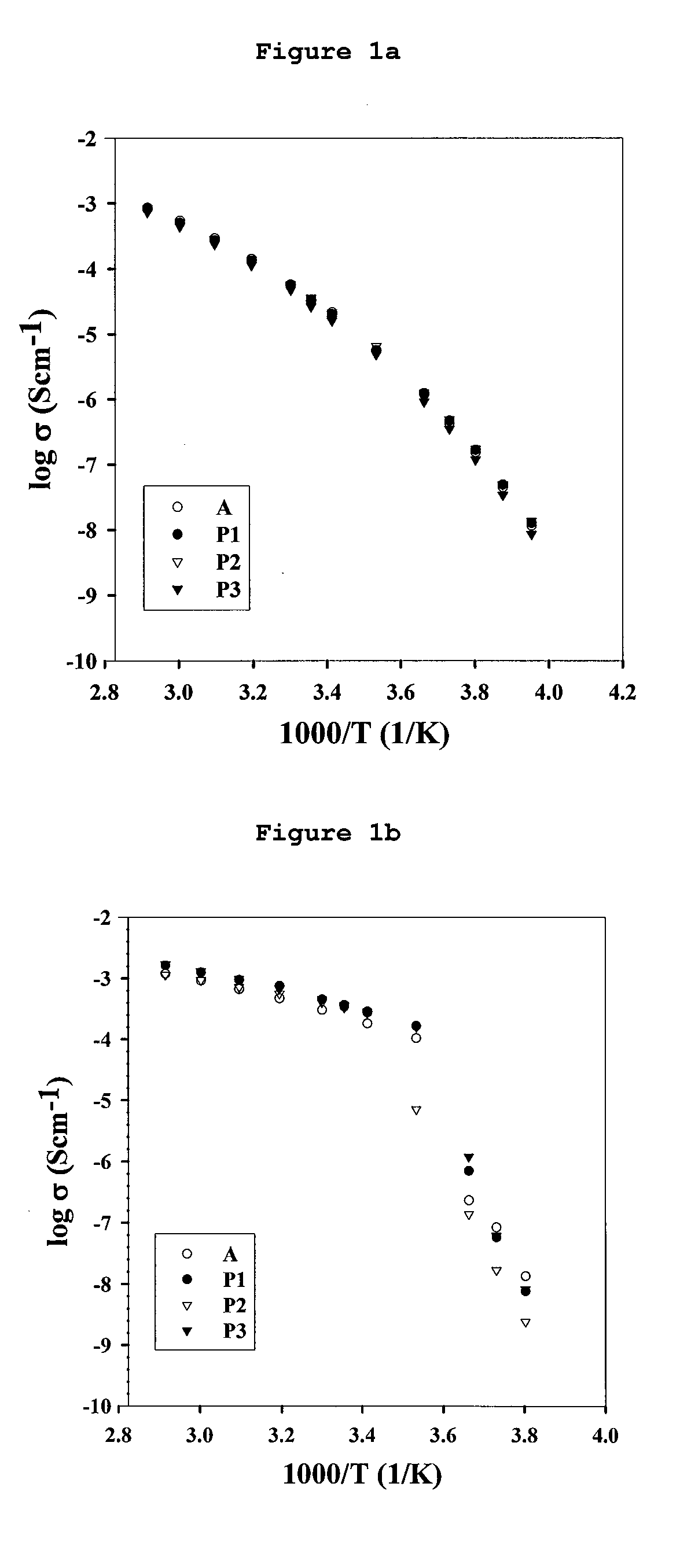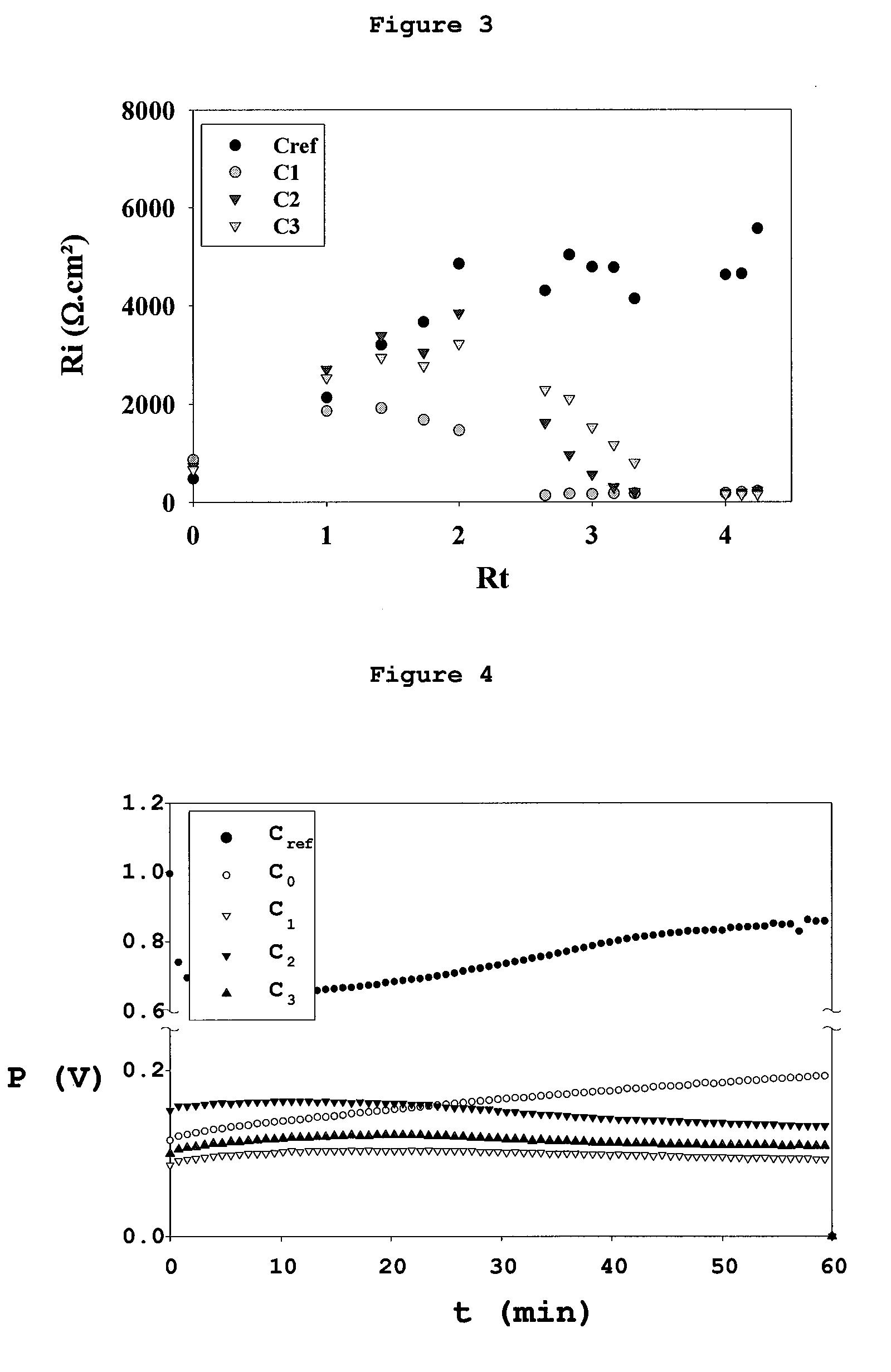Process for modifying the interfacial resistance of a metallic lithium electrode
a technology of metallic lithium electrode and interfacial resistance, which is applied in the field of process for modifying the interfacial resistance of metallic lithium electrode, can solve the problems of degrading electrolytic solution, battery explosion, and replacement to the detriment of the specific capacity of the battery, and achieves the effect of reducing the resistance of the interfa
- Summary
- Abstract
- Description
- Claims
- Application Information
AI Technical Summary
Benefits of technology
Problems solved by technology
Method used
Image
Examples
Embodiment Construction
[0017]According to a preferred embodiment of the invention, the particles are deposited by dispersing them in the electrolytic solution followed by their sedimentation on the surface of the electrode. Such a method of deposition has the advantage of being particularly simple since the formation of the film takes place by sedimentation over the course of time of the particles dispersed in the electrolytic solution.
[0018]The metal oxide constituting the particles is for example chosen from Al2O3, SiO2, TiO2, ZrO2, BaTiO3, MgO and LiAlO2. These particles are readily available commercially and are of low cost.
[0019]Furthermore, prior to the deposition, the metal oxide particles may be modified by grafting onto their surface groups having an acidic character.
[0020]In particular, the metal oxide particles may be Al2O3 particles modified by SO42− groups.
[0021]The metal oxide particles may be modified by bringing the particles into contact with an aqueous solution containing the acid groups...
PUM
| Property | Measurement | Unit |
|---|---|---|
| Polarity | aaaaa | aaaaa |
| Electrical resistance | aaaaa | aaaaa |
| Acidity | aaaaa | aaaaa |
Abstract
Description
Claims
Application Information
 Login to View More
Login to View More - R&D
- Intellectual Property
- Life Sciences
- Materials
- Tech Scout
- Unparalleled Data Quality
- Higher Quality Content
- 60% Fewer Hallucinations
Browse by: Latest US Patents, China's latest patents, Technical Efficacy Thesaurus, Application Domain, Technology Topic, Popular Technical Reports.
© 2025 PatSnap. All rights reserved.Legal|Privacy policy|Modern Slavery Act Transparency Statement|Sitemap|About US| Contact US: help@patsnap.com



